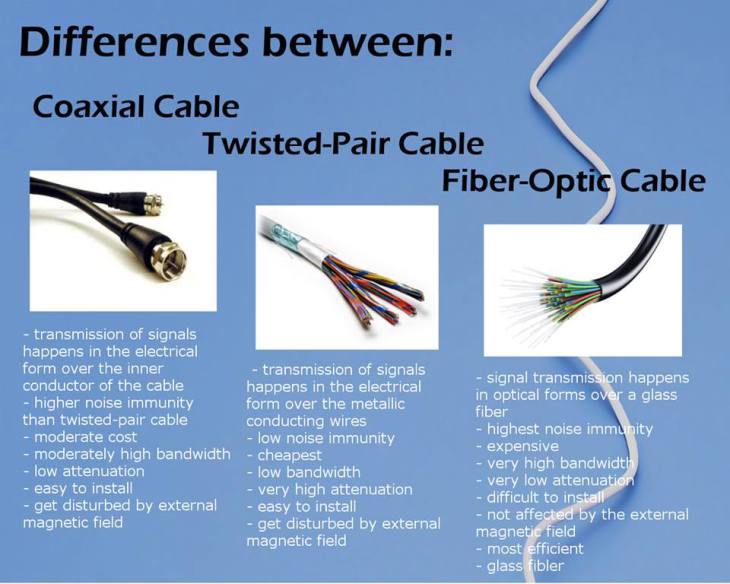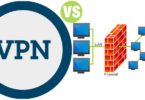Fiber Optic vs Coaxial Cable
Summary: Difference Between Fiber Optic Cable and Coaxial Cable is that the core of a fiber-optic cable consists of dozens or hundreds of thin strands of glass or plastic that use light to transmit signals. Each strand, called an optical fiber, is as thin as a human hair. Inside the fiber-optic cable, an insulating glass cladding and a protective coating surround each optical fiber. While Coaxial cable, often referred to as coax (pronounced KO-ax), consists of a single copper wire surrounded by at least three layers: (1) an insulating material, (2) a woven or braided metal, and (3) a plastic outer coating.

Fiber Optic
The core of a fiber-optic cable consists of dozens or hundreds of thin strands of glass or plastic that use light to transmit signals. Each strand, called an optical fiber, is as thin as a human hair. Inside the fiber-optic cable, an insulating glass cladding and a protective coating surround each optical fiber.
Fiber-optic cables have the following advantages over cables that use wire, such as twisted-pair and coaxial cables:
Capability of carrying significantly more signals than wire cables.
Faster data transmission.
Less susceptible to noise (interference) from other devices such as a copy machine.
Better security for signals during transmission because they are less susceptible to noise.
Smaller size (much thinner and lighter weight).
Disadvantages of fiber-optic cable are it costs more than twisted-pair or coaxial cable and can be difficult to install and modify. Despite these limitations, many local and long-distance telephone companies are replacing existing telephone lines with fiber-optic cables, enabling them to offer fiber Internet access to home and business users.
Coaxial
Coaxial cable, often referred to as coax (pronounced KO-ax), consists of a single copper wire surrounded by at least three layers: (1) an insulating material, (2) a woven or braided metal, and (3) a plastic outer coating. Cable television (CATV) network wiring often uses coaxial cable because it can be cabled over longer distances than twisted-pair cable. Most of today’s computer networks, however, do not use coaxial cable because other transmission media such as fiberoptic cable transmit signals at faster rates.
Also Read:
Difference Between Twisted Pair and Coaxial Cable
Difference Between Twisted Pair and Fiber Optic Cable
Difference Between Wireless Access Point and Router







Leave a Comment
You must be logged in to post a comment.